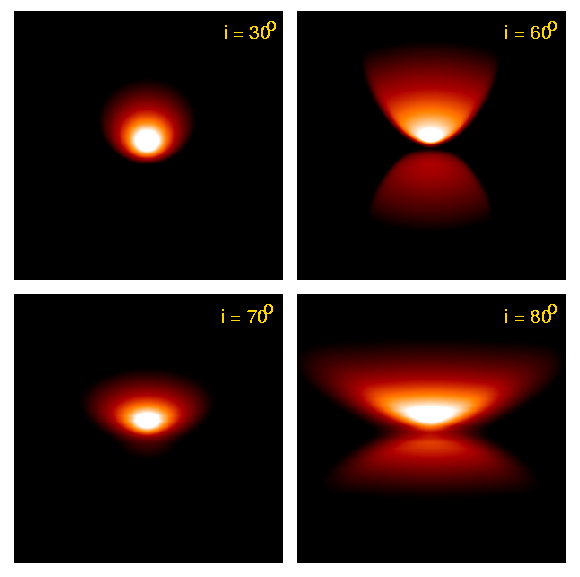
The interpretation of our high-resolution observations of young stellar objects with circumstellar material requires a detailed modelling and depends crucially on the application of adequate methods of solution of the radiation transfer problem. We use a fully two-dimensional frequency-dependent radiation transport code to compute a self-consistent solution of the radiation transfer problem within the framework of the flux-limited diffusion approximation. The structure of the circumstellar material is assumed to be axisymmetric, but otherwise can have arbitrary geometry. Thus, we can model density distributions with a wide variety of structures, including disks, envelopes, tori, and cavities. The first part of our code computes the distribution of dust temperatures and mean radiation intensities on a set of nested grids. In a second step a ray-tracing procedure is used to calculate intensity maps at several wavelengths and the spectral distribution of the emitted flux. Some examples for simulated images of young stellar objects with envelopes or disks are shown in the image below.
